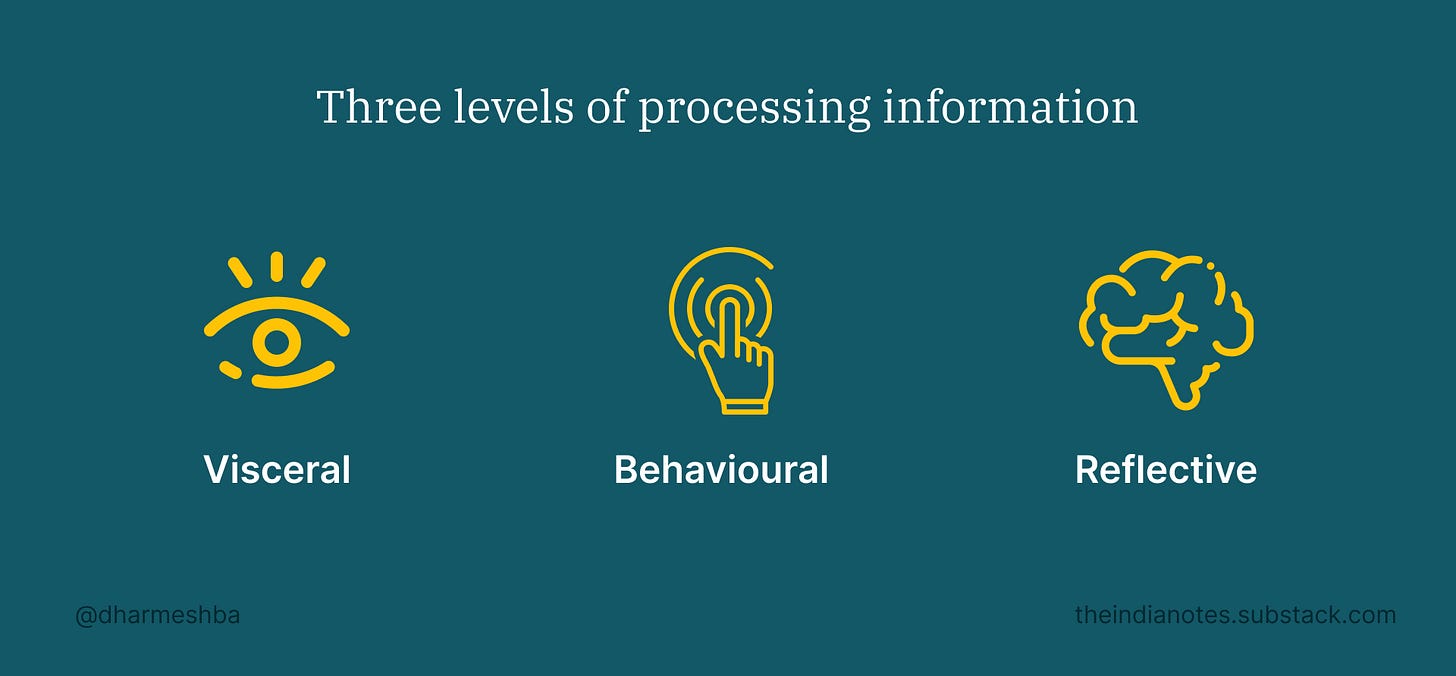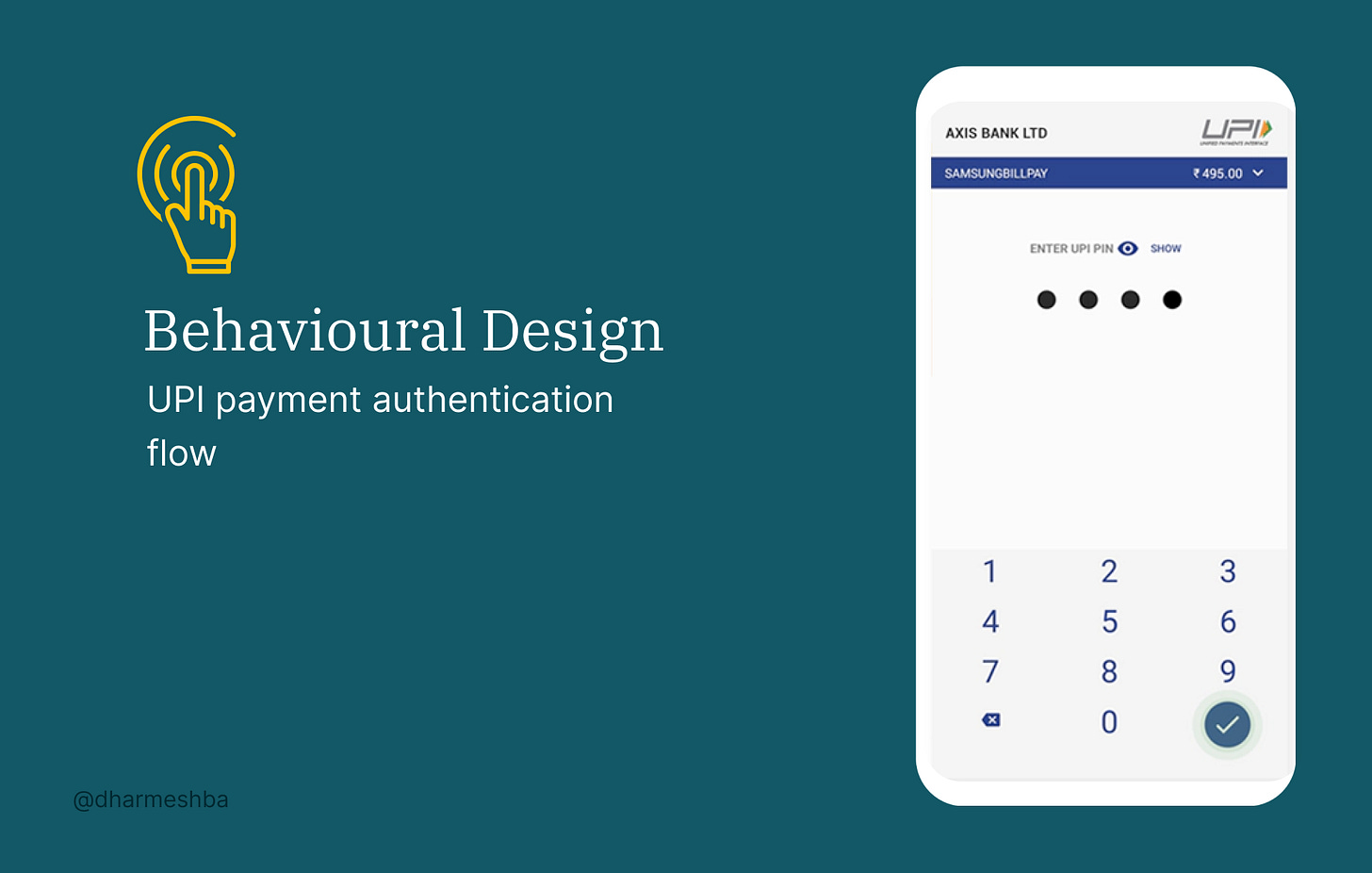Are human emotions neglected in fintech?
Designing trustworthy digital financial services for India
Hello there 👋
Wondering why has this email landed in your inbox? Your substack subscription ‘Design for India’ has changed its name to ‘The India Notes’ :)
Erode is a Tier-2 city in Tamilnadu where my family lives. Small finance banks had recently opened bank branches and offered attractive interest rates compared to the big banks. My dad decided to move lumpsum money to one of these banks and went on a bank hopping spree. After enquiring with multiple banks, he returned home and disclosed his decision. To my surprise, his bank of choice was not the one with the highest interest rate.
The following statement was his rationale,
'Most of the branch managers in the banks were in casual attire wearing a checked shirt and a normal pant. They all look like grocery store owners, just like me, but the bank I chose has a branch manager who wears a suit in the branch. He has a sense of authority. I am going to trust my money with him.'
The above statement gave me a sneak peek into his worldview. Trust acts in strange ways, especially when it comes to money. Im sure this is not his only deciding factor but played an essential role in choosing one brand over the other.
In India, financial services are predominantly distributed through interpersonal relationships. If you are a part of a privileged middle-class household, you would know
A family accountant who advises you on mutual funds.
A distant relative who sells LIC insurance as passive income.
A bank branch manager who could get you an education loan.
These individuals are the trust enablers and play a massive role in adopting various financial products in Indian society. Emotions play a huge role in financial services as they signal progress or distress in our lives, be it getting a higher education, planning for retirement or borrowing unsecured loans.
While designing digital financial services (DFS), we eliminate this interpersonal relationship and convert them into a faceless transaction. For example, the UPI app does not differentiate between the payment made for buying a coffee and payments made during a medical emergency in a hospital. A transaction failure has severe consequences in the latter context. But tech doesn't care?! Does it?
How do we build trustworthy financial services?
In his most infamous book, 'Emotional Design', Don Norman talks about three levels of processing information.
Visceral
Behavioural
Reflective
Each of the three levels of Design plays an essential part in shaping our experience but require a different approach by the designer.
The visceral level refers to how a product looks visually and has an emphasis on aesthetics. Visceral responses are fast, subconscious and are about immediate perception. At this level, style matters and has nothing to do with how usable the product is.
The behavioural level is the home of learned skills triggered by situations that match appropriate patterns. At this level, we are usually aware of the actions but unaware of the details. The activities at this level happen from muscle memory and are subconscious. At this level, the functioning of the product is the focus.
The reflective level is the home of conscious actions. The visceral and behavioural level are subconscious, and they respond rapidly without much analysis. Reflection is cognitive, deep and slow and happens after the events have occurred. We look back at them and associate blame or responsibility. The highest level of emotions come from the reflective level. Emotion and cognition are tightly intertwined.
Design must take place on all three levels. Reflective responses are a part of eventful memories. It is a reflection that drives us to recommend a product to others or perhaps to avoid it. Reflective memories are often more important than reality.
A short note from the book Emotional Design:
Customer relationships play a significant role at the reflective level, so much so that a good relationship can completely reverse an otherwise negative experience with the product. Thus, a company that goes out of its way to assist and help disgruntled customers can often turn them into its most loyal fans. Indeed, the person who buys a product and has nothing but pleasant experiences with it may be less satisfied than the one who has a painful experience but is well treated by the company as it fixes the problem. This is an expensive way to win customer loyalty, but it shows the power of the reflective level. Reflective Design is really about long-term customer experience. It is about service, about providing a personal touch and friendly interaction. When a customer reflects on the product to decide what next to purchase or advise friends, a pleasant reflective memory can overcome any prior negative experiences.
Digital Financial Services (DFS) focus primarily on the visceral and behavioural level of Design but not consciously designed for the reflective level of Design. One could witness this in the product positioning of DFS, which primarily revolves around the practical aspects like cashback, interest rates, no documentation, discounts etc. This kind of product positioning, along with UI and UX, could be a great way to acquire customers but might not be sufficient to build long-term loyalty. Unless people have emotionally invested in the product, the cost of switching to a new brand would be better utility features.
Below is a short comparison of why fintech prefers investing resources and effort in the visceral and behavioural level of Design instead of reflective Design.
Unless people have emotionally invested in the product, the cost of switching to a new brand would be better utility features like higher cashbacks. Even when people stick around with the product, they are less likely to try out the adjacent financial offerings.
Why should people invest mutual funds through an app which is just a scan and pay app?
Why should people take a loan from an app which records Khata transactions?
I don't mean to be pessimistic, but we have a long way to go before such questions are answered. Our current way of designing DFS might not lead to our intended outcome. Understanding cultural context and emotions are crucial to building long term relationships.
I hope there comes a day where the UPI network prioritises a health emergency payment over a coffee transaction, ensuring a successful transaction for the person in distress.
Fin!
This is an opinion piece on design and I am happy to hear your perspective on the post. If you find this interesting, do share it among your peers.
About Dharmesh Ba
I love listening to stories and narrating them. I am a product designer turned qualitative researcher. I primarily work at the intersection of design, finance and technology for India. I’m committed to building digital services for India through research and design. Have been recently exploring the intersection of technology and policymaking.
You can follow me on Twitter and LinkedIn for more updates.
Icon and illustration credits: Iconscout











It is quite interesting to understand, the very ways our society is constructed. Even though we as a generation is more about "I" and the world around "me" a large portion of society as we know is still collectivist in nature. And very rightly said unless we understand the context of a transaction, we wont be able to create a long term relationship that a bank manager or a relative (LIC Uncle) has.